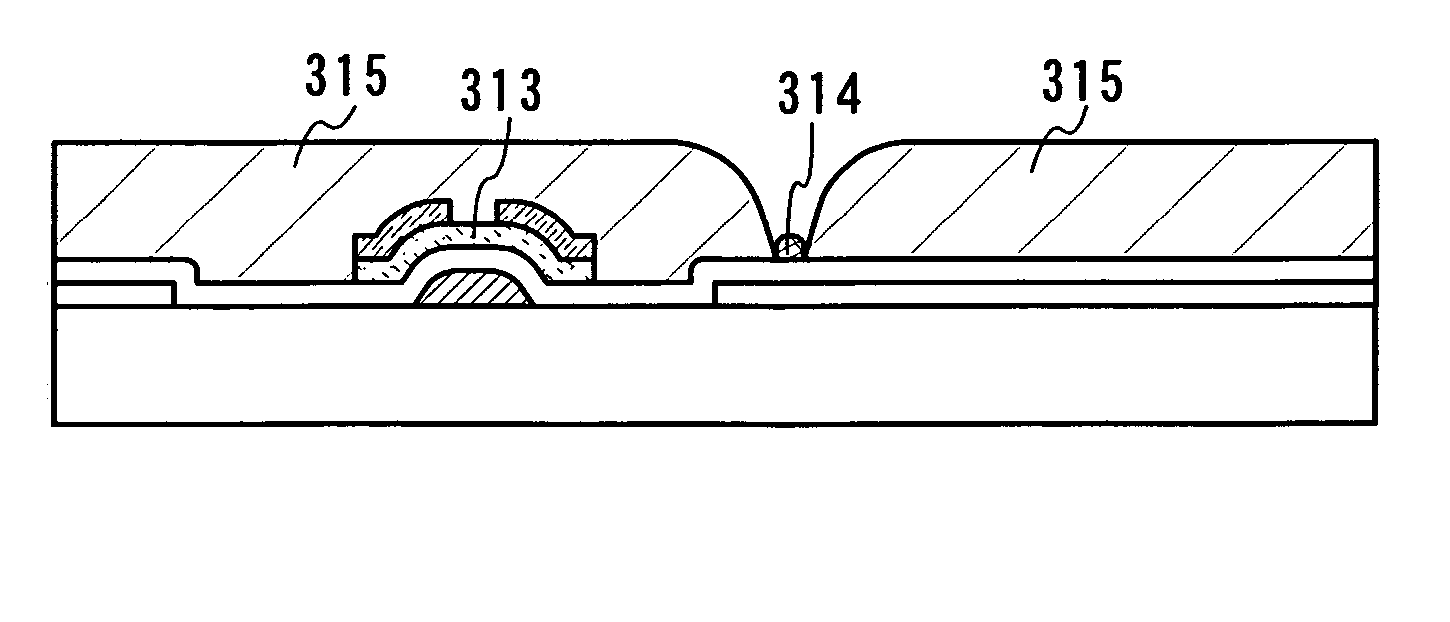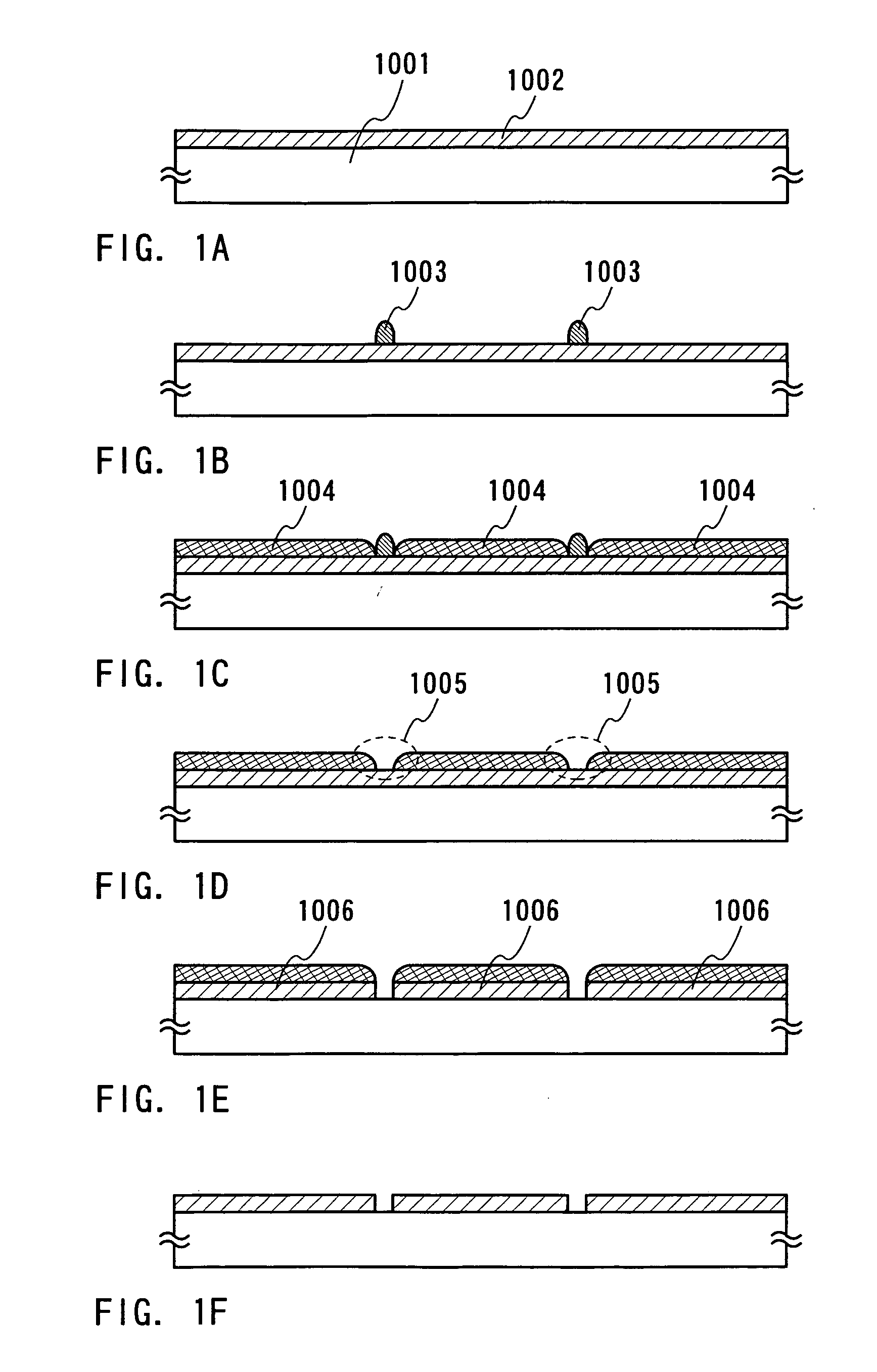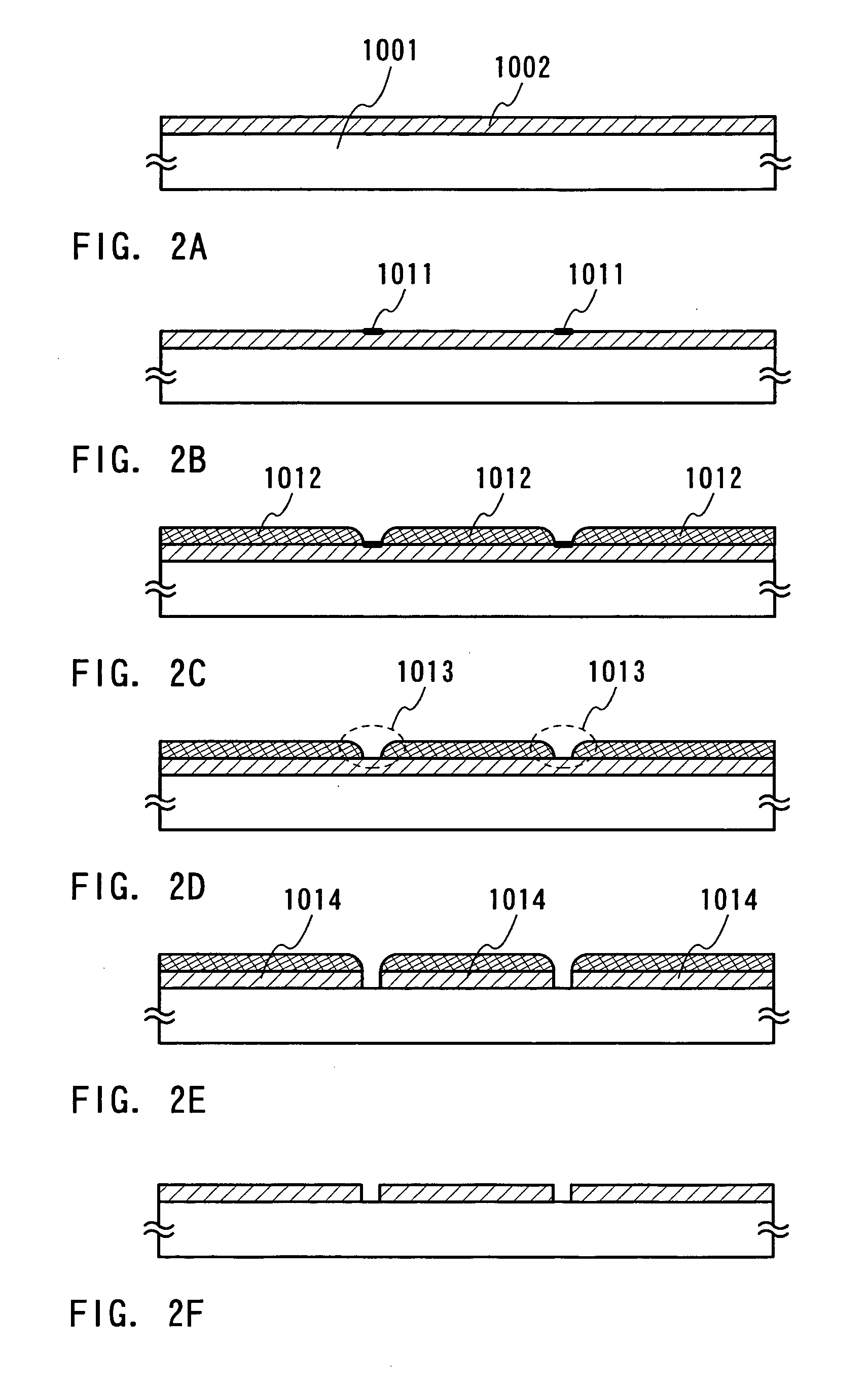Method for manufacturing display device, liquid crystal telvision, and EL television
a display device and liquid crystal technology, applied in the direction of organic semiconductor devices, instruments, optics, etc., can solve the problems of reducing yield, wasting most of resist materials, reducing throughput, etc., and achieves low wettability, high yield, and high wettability.
- Summary
- Abstract
- Description
- Claims
- Application Information
AI Technical Summary
Benefits of technology
Problems solved by technology
Method used
Image
Examples
embodiment mode 1
(Embodiment Mode 1)
[0062] This embodiment mode describes, with reference to FIGS. 1A to 1F, a step of forming a mask pattern for forming a pixel electrode by forming a first mask pattern of a material having low wettability over a conductive film, forming a second mask pattern of a material having high wettability, and removing the first mask pattern and a step of forming a pixel electrode.
[0063] A first conductive layer 1002 is formed over a substrate 1001 as shown in FIG. 1A. The first conductive layer is formed of a conductive material which can serve as a pixel electrode.
[0064] A glass substrate, a quartz substrate, a substrate formed of an insulating material such as alumina, a heat-resistant plastic substrate which can withstand a processing temperature of a later step, a silicon wafer, a metal plate, or the like can be typically used as the substrate 1001. In this case, an insulating film for preventing impurities from the substrate side from diffusing, such as a silicon ox...
embodiment mode 2
(Embodiment Mode 2)
[0083] This embodiment mode describes, with reference to FIGS. 2A to 2F, a step of forming a mask pattern for forming a pixel electrode by forming a first mask pattern using a material having low wettability with the use of a compound including a fluorocarbon chain and then forming a second mask pattern using a material having high wettability and a step of forming a pixel electrode.
[0084] As in Embodiment Mode 1, a first conductive layer 1002 is formed over a substrate 1001 as shown in FIG. 2A.
[0085] Afirst mask pattern 1011 is formed over the first conductive layer 1002 as shown in FIG. 2B. In this embodiment mode, a mask pattern having low wettability is formed as the first mask pattern. A material having low wettability is applied by a printing method typified by screen (stencil) printing, offset (planographic) printing, relief printing, gravure (intaglio) printing, or the like, a droplet discharge method, or the like to form the first mask pattern 1011. A s...
embodiment mode 3
(Embodiment Mode 3)
[0095] This embodiment mode describes a method for manufacturing an active matrix substrate of a display device with reference to FIGS. 3A to 3F. This embodiment mode is described using a bottom gate channel etch TFT as a pixel driving element. Note that a second conductive layer 301 is formed using Embodiment Mode 1; however, this embodiment mode is not limited thereto. Embodiment Mode 2 can also be used.
[0096] A first conductive layer 1002 is formed over a substrate 1001 as shown in FIG. 3A. After a first mask pattern 1003 is formed according to a similar step to that in Embodiment Mode 1, a second mask pattern 1004 is formed.
[0097] The first mask pattern 1003 is removed to expose a portion of the first conductive layer. The first conductive layer is etched to form the second conductive layer 301 serving as a pixel electrode. Then, the second mask pattern 1004 is removed.
[0098] A third conductive layer 302 serving as a gate electrode is formed over the substr...
PUM
| Property | Measurement | Unit |
|---|---|---|
| contact angle | aaaaa | aaaaa |
| contact angle | aaaaa | aaaaa |
| diameter | aaaaa | aaaaa |
Abstract
Description
Claims
Application Information
 Login to View More
Login to View More - R&D
- Intellectual Property
- Life Sciences
- Materials
- Tech Scout
- Unparalleled Data Quality
- Higher Quality Content
- 60% Fewer Hallucinations
Browse by: Latest US Patents, China's latest patents, Technical Efficacy Thesaurus, Application Domain, Technology Topic, Popular Technical Reports.
© 2025 PatSnap. All rights reserved.Legal|Privacy policy|Modern Slavery Act Transparency Statement|Sitemap|About US| Contact US: help@patsnap.com



